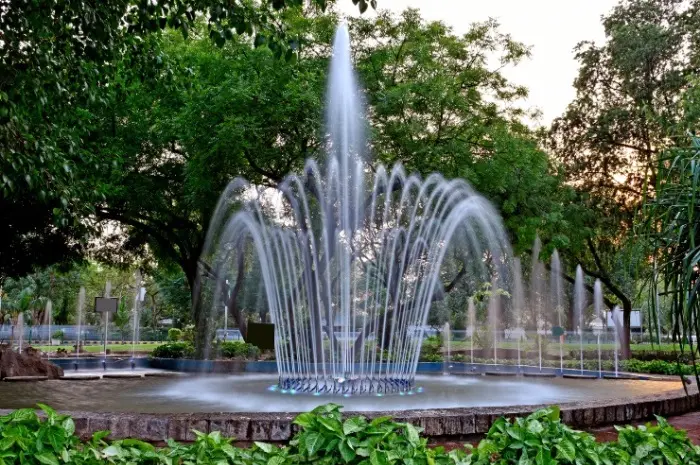Are you experiencing problems with your water fountain? Don’t worry, you’re not alone! As beautiful as they are, fountains can be quite tricky to maintain. From leaks to malfunctioning mechanisms, there are several issues that could arise and leave your soothing oasis in disarray.
But fear not! In this blog post, we will explore common water fountain problems and their solutions so that you can troubleshoot any issues like a pro and get back to enjoying the serene ambiance of your beloved water features.
Fountains that leak
Fountains that leak are one of the most common issues people face with their fountains. Leaks can occur due to various reasons such as cracks in the fountain basin, damaged pump or tubing, and worn-out seals. Fortunately, fixing a leaking fountain is not rocket science.
Firstly, locate the source of the leak by inspecting all parts of your fountain carefully. Once you’ve identified where it’s coming from, turn off your fountain’s water supply and remove any standing water from its basin before attempting any repairs.
If your fountain has a crack in its base or bowl, use waterproof sealant to fill it up. For leaks resulting from damaged pumps or tubing connections, tightening loose fittings might be enough to fix them temporarily until they can be replaced.
It’s also important to clean and maintain your fountain regularly as dirt buildup can cause damage over time leading to leaks. By taking good care of your water feature and addressing any issues promptly when they arise will ensure that it continues running smoothly for years to come!
Fountains that stop working
It’s frustrating when your water fountain suddenly stops working. There could be a number of reasons why this is happening.
First, check the power supply to make sure that it hasn’t been disconnected or tripped. If the power supply is fine, then it’s possible that there is an issue with the pump itself. Dirt and debris can clog up the pump and cause it to stop functioning properly.
Another common reason for fountains that stop working is low water levels in the reservoir. Make sure that you’re filling up your fountain regularly so that there’s always enough water to keep things running smoothly.
If you’ve checked all of these potential issues and are still having trouble with your fountain, it may be time to call in a professional repair service. They’ll be able to diagnose any more serious problems and fix them quickly so that you can get back to enjoying your beautiful outdoor space.
Remember, regular maintenance on your fountain will help prevent future breakdowns!
Fountains that spray water in all directions
One of the most frustrating problems with a water fountain is when it starts spraying water in all directions. Not only does this look messy, but it can also waste a lot of water and make your fountain less effective at creating ambiance.
The first thing to check is whether there’s something clogging the nozzle or spout that’s causing the spray. You can use a small brush or toothbrush to gently clean these areas and remove any debris.
If cleaning doesn’t solve the problem, you may need to adjust the flow rate of your pump. Too high of a flow rate can cause excess pressure that leads to spraying. Try reducing the flow by adjusting your pump settings or adding an inline valve to regulate it.
Another possible culprit is air bubbles in your piping system. These bubbles create back pressure that causes water to spray out unpredictably. To fix this issue, turn off your fountain and allow time for any trapped air pockets within pipes and other components in order for them to escape.
If none of these solutions work you should consider seeking professional help from someone who specializes in fixing fountains as they will have more tools and knowledge than most people do regarding how best resolve such issues effectively without compromising on quality maintenance practices
Fountains that are difficult to fill or empty
Have you ever experienced a water fountain that is just too difficult to fill or empty? It can be frustrating, especially if you have to do it frequently. One of the most common causes of this problem is a poorly designed fountain. Some fountains may have narrow openings at the top, making it hard to pour water in without spilling.
Another reason why filling and emptying may be difficult is due to debris buildup. Over time, leaves, dirt, and other particles can accumulate inside the fountain’s reservoir, making it harder for water to flow smoothly in and out. This can cause clogging and even damage your pump.
To prevent this issue from happening again, make sure that you clean your fountain regularly by removing debris from its reservoir. You should also check for any blockages in the pipes or tubing leading into the pump.
If all else fails, consider upgrading your fountain with an easier-to-use design or investing in a self-cleaning system that automatically removes debris from your reservoir over time.
Fountains that are too high or low
One common problem that people face with their water fountains is that they may be too high or low. This can cause a number of issues, such as difficulty in maintaining the fountain, trouble with filling or emptying it and even potential safety hazards.
If your fountain is too high for your liking, you may find it difficult to reach the top to clean and maintain it properly. In this case, you could consider lowering the height of the fountain by adjusting its base or stand.
On the other hand, if your fountain is too low and close to the ground, you might experience problems when filling or emptying it. You could try raising its base slightly so that it’s easier to access.
It’s also important to consider safety when dealing with fountains that are either too high or low. If they’re placed in an area where people frequently walk by, a taller fountain might pose a risk of falling over while a lower one could be easily tripped over.
Finding the right height for your water fountain is crucial not only for aesthetic purposes but also for practical reasons like maintenance and safety. By making some simple adjustments based on your needs and preferences, you can ensure that your fountain provides both beauty and functionality without any hassle!
Fountains that spout out water when the lever is pulled
One common problem that some water fountains experience is spouting out water when the lever is pulled. This issue can be quite frustrating for fountain owners, as it makes using the fountain difficult and messy.
One possible cause of this problem could be a damaged or worn out lever mechanism. Over time, the components of the lever system may begin to wear down or break, causing water to spray uncontrollably when pressure is applied to the lever.
Another potential reason for this issue could be an obstruction in the fountain’s plumbing system. A clogged pipe or valve can disrupt normal water flow and cause unexpected spurts of water during use.
To troubleshoot this problem, it’s important to first turn off your fountain’s pump and drain any remaining water from its basin. Next, inspect all visible parts of your fountain’s lever mechanism for damage or wear and replace any worn-out parts as necessary.
If you suspect that there may be an obstruction in your plumbing system, consider hiring a professional plumber to help diagnose and fix the issue properly.
Experiencing issues with a spouting lever on a fountain can be frustrating but identifying key causes like damaged levers mechanical problems or obstructions in plumbing are critical steps towards finding solutions.
Conclusion
Maintaining a water fountains may seem daunting at first, but with a little bit of troubleshooting and regular upkeep, you can keep your fountain running smoothly for years to come. Remember to always check for leaks and clogs, ensure proper water levels, and clean the fountain regularly.
By following these simple steps and addressing any issues as they arise, you can enjoy the beauty and tranquility of your water feature without any hassle or frustration. A well-maintained fountain not only adds aesthetic value to your home or garden but also provides a soothing ambiance that is sure to impress both guests and visitors alike.






